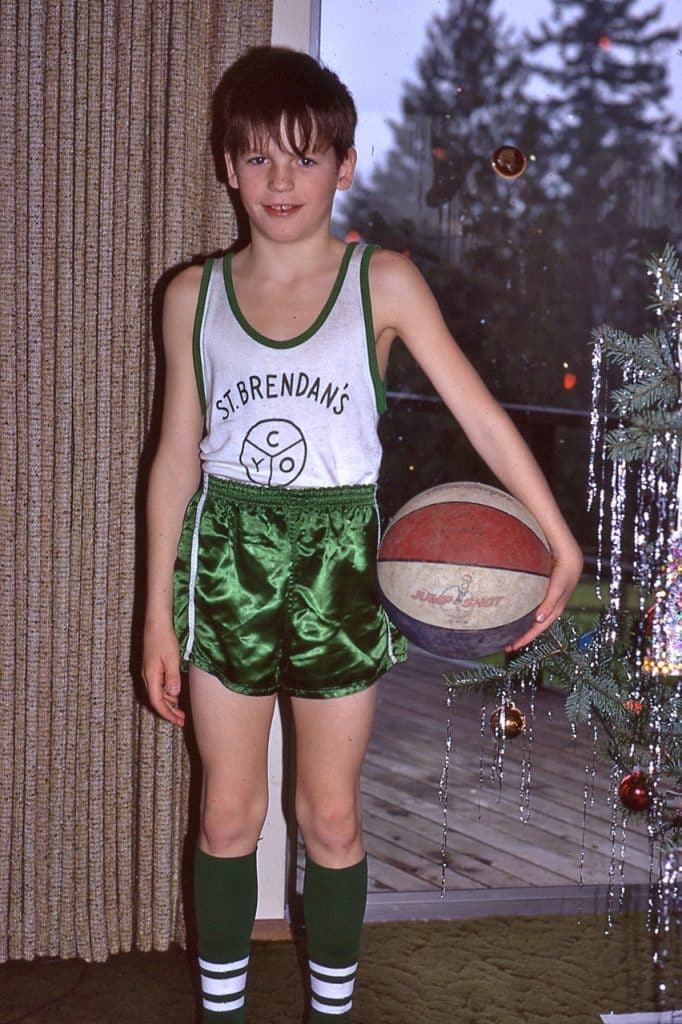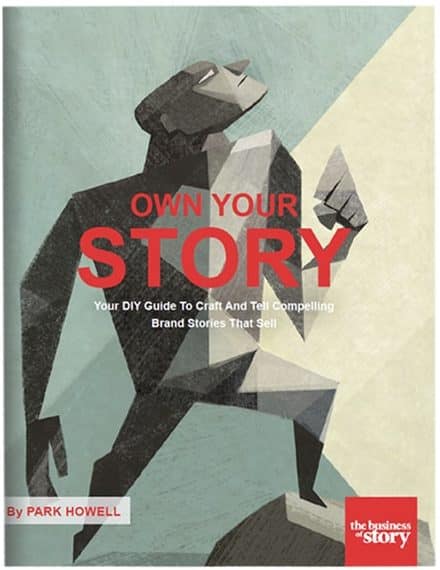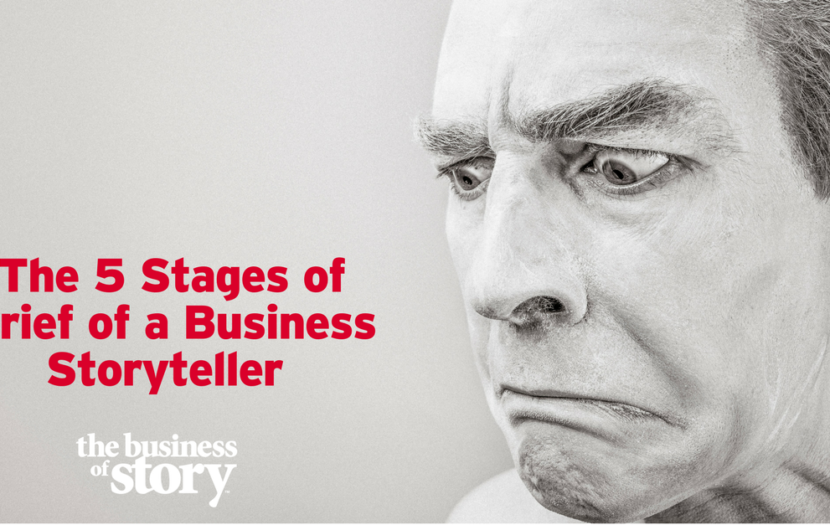How to move from denying to accepting business and brand storytelling as key to your leadership growth
I witness the five stages of grief in every business storytelling workshop I lead. Many participants accept storytelling as a powerful business and leadership talent. But some go through an unnerving, cathartic, self-reflective process to get there.
Their trepidation of business storytelling parallels the five stages of grief:
- Denying that stories work in business
- Anger that they have to embrace vulnerability in their brand and leadership storytelling
- Bargaining by making excuses for their lack of narrative talent
- Depression when they think that everyone but they have interesting stories to tell
- Acceptance when they experience the power of stories in their life
I feel sorry for those who still don’t get it. They don’t appreciate that, as Jonathan Haidt said in his book, The Righteous Mind: Why Good People are Divided by Religion and Politics, “The mind is a story processor, not a logic processor.”
To me, stories are what have evolved us from cavemen to consumers. Stories are the most important tool for survival.
Your 5 stages of business storytelling grief or growth?
I completed a two-day brand storytelling workshop for global hotelier Hilton Hotels. I witnessed how some of the attendees went through the five stages of grief and finally accepted storytelling as an essential business and leadership tool.
Here is how I can help you – or your boss – overcome your/their reluctance to tell stories. Do you experience these emotions?
1. DENIAL: “Storytelling is just a gimmick.” I hear that often. Hollywood uses story to sell movies. So why don’t more businesses? One way I help people overcome their story denial is to show them the famous Heider Simmel video.

Once they’ve watched this roughly 60-second film of geometric shapes floating around on the screen, I ask them what they saw. I hear everything from stories about domestic violence to Romeo and Juliet to kids catching butterflies.
This short Rorschach-like video literally invokes stories from Shakespeare to Porkies in people’s heads. They’re amazed at how their minds automatically make up stories. Our brains create these narratives to try to find meaning in a meaningless, abstract artifact. They don’t logically process what they’re seeing. Our reptilian brain makes up a story to process the information.
“The mind is a story processor, not a logic processor.”
– Jonathan Haidt
What stories are your audiences making up about you? If you’re leading your communications with abstract data, I guarantee you they’ll make sense out of it through their own story. And chances are good that it’s not the story you intended to tell unless you intentionally tell a story.
There is no denying that stories are what make us uniquely human. Stories are how we make meaning out of the madness of being alive.
2. ANGER: You can’t believe how often I hear, “Communications is a ‘soft skill’ in business.” Translation: “My technical skills can beat up your communication and relationship skills.”
Actually, they can’t. And if storytelling is a soft skill, then why is it so friggin’ hard?
You’ll never best a story by fighting it with stats and facts. The only thing that overcomes an entrenched view is a better story.

My brawn in the 6th grade
I remember when I was a Seattle Times paperboy in the sixth grade. There was a bully on my route named James who was older and bigger than me. I was terrified of him.
One day, my friend Paul and I were coming out of Lamont’s department store at Totem Lake Mall near where I grew up north of Seattle in Woodinville, WA. Up walks James with his stupid, gangly henchman, Rex.
I thought, “Oh boy, here we go.”
But instead of being frightened of James, a sudden jolt of courage gripped me. I knew I was going to get socked, so I pre-empted (or prompted) his punch.
He asked, “Where’d you get the new shirt, Puke?”
“In the men’s department at Lamont’s. But you probably wouldn’t know anything about that, James,” I responded.
“POW!”
He popped me a good one below my left eye. Saw it coming. But what was I to do?
Then I asked, “Are you done here?”
He shrugged an “I guess so,” and we went our separate ways.
James never bothered me again. I think I gained some respect from him that day. Even though I didn’t (couldn’t) beat him up, I tugged James into my smartass world through a story.
I also gained a little more empathy for him. Like all bullies, he was afraid of something. Which made him angry. And that’s what caused him to do stupid bully stuff.
I hate bullies and feel sorry for them at the same time. Confusing.
Those in my brand storytelling workshops who cross their arms and frown about having to do the “storytelling thing” are just fearful that they’re going to suck at it. They don’t know how to tell a story. And that makes them angry.
When I press the issue, they sometimes try to give me a shiner. Like when one lady in a different session who was visibly frustrated and fearful told me my approach was “reductive and insulting.”
No, it’s not. Storytelling simply touches nerves. And that’s why nothing beats a story other than a better story.
So don’t be frightened of storytelling. It’s what makes you uniquely human. Be intentional and brave with your stories. You won’t believe how powerful you will become.
See what I just did there? I used a personal story to make a business point.
Works every time.
3. BARGAINING: “Oh God, I’ll do anything. Just don’t make me tell a story.” That’s what I sometimes hear.
Then, when my participants get up to tell their story, they try to bargain with the audience.
They say, “I’m a lousy storyteller, so don’t expect too much.”
If this sounds like you, stop bargaining. It’s non-negotiable. Because stories are your social currency that earn attention, respect and influence.
Stories are important to the survival of your brand, organization and your leadership role within both.
Often when someone gets up and bargains with the audience asking to be forgiven for not having a good story, they turn out to tell a great one.
Shara Jacinto, a B2B Marketing Manager for Hilton Hotels, told us about growing up in the Philippines in the 1990’s. She is the daughter of a Filipino mother and an American father.
Her parents were exporters of publications to the Middle East and Australia, so she traveled a lot as a kid. And loved it!
On one trip, a Filipino couple came up to her and asked about life back in their country. They also asked her to say hello to their family when she returned home. This was weird to young Shara because these were total strangers.
“Mom, why did they ask me to say hello to their family?” she asked. “I don’t even know them.”
“Because we don’t have enough jobs in our country. Some people have to work other places to support their families. I think they are homesick, that’s why they asked you to say hello to their loved ones,” her mother replied.
When they returned home, Shara noticed a billboard from the Philippines Department of Tourism that read, “Tourism Means Jobs.” It clicked with her. She thought if she could work in tourism, she could create more jobs and help families remain together in the Philippines.
This was her inspiration for her education.
In 2006, Shara graduated from the University of Asia and the Pacific with a degree in integrated marketing communications. She was also accepted as one of only 11 students in the school’s exclusive Master’s program.
She was overjoyed.
Shara turned 21 years old with a bright future ahead. Then, her mother made an urgent realization.
“Shara, you are now an adult, and you must declare whether you will be a citizen of the Philippines or of the United States,” she told her.
She wanted to stay in her homeland, but it was not a question for her parents. Shara was to become an American citizen and take advantage of all of the opportunities the country had to offer.
Heartbroken, Shara told her friends – and Master’s studies – goodbye. Four months later she found herself in New Jersey living in the attic of a home owned by friends of her parents. But they were total strangers to her.
Shara had little money. No prospects. No drivers license. And had to rely on these kind but foreign people for everything. She said that most nights she cried herself to sleep.
Three months later, Shara learned that a childhood friend was living in New York. When she contacted him, he offered Shara his apartment for the summer because he was going to Austria for the season. She lept at the offer.
Now Shara was a stranger in an even stranger land. She walked the neighborhoods and took temporary jobs at several small businesses, starting with The Body Shop. In each position, she learned something new. She also found herself creating systems to help make the businesses more efficient.
“You’re really good at creating structure,” she recalls hearing from her employers.
Then she landed a front desk job at the Bryant Park Hotel.
“This is where all hospitality careers begin,” she thought. Her dream of creating jobs in tourism started to take shape. But her family missed her.
Her parents coaxed her into moving to Guam to be closer to them just as she was feeling at home in the U.S. She was reluctant but complied, and moved to Guam spending 18 months as a catering manager at the Hyatt.
But she missed New York.
In 2007, right before the great recession, Shara moved back to Manhattan and went to work for the Hilton New York Midtown. She took a day job so she could attend night school at New York University where she would finish her master’s of science in hospitality industry studies focused on brand strategy.
“I was Hilton’s guinea pig,” she laughed. “They would give me all kinds of programs to see what I could do with them.”
“The Hilton New York Midtown gets more leads than any other Hilton property, and they weren’t sure they were converting enough of them. So they moved me from sales coordinator to leads catcher. I optimized our meeting space, filled need periods, and recaptured lost opportunities. My success with defining and growing this program got me promoted to coordinating international sales leads.
“I have been with Hilton for nearly 10 years, and I have created at least eight jobs in the wake of every new project I’ve undertaken.
“I’m living my dream of creating jobs through travel and tourism,” she grinned.
When Shara finished sharing her story with her colleagues, many were amazed at what she had overcome.
I asked her if she had ever had a project at Hilton fail. With a huge smile, she said, “No, they’ve all been successful.” Then giggled.
“Why do you think Hilton has made you its guinea pig?” I asked.
She shrugged.
I suggested that given her willingness to take on new beginnings throughout her life that she was the ideal professional to do it in her job.
Her face lit up with this realization.
Then I asked her to complete this thought: “Nothing in Shara’s professional journey makes sense except in the light of what?”
She pondered only a moment and smiled, “Resiliency.”
I asked her colleagues if they thought the theme of resiliency captured Shara’s spirit, and they all agreed.
Now, through the telling of her story, Shara has a whole new appreciation for her journey at Hilton. And her colleagues have an even greater appreciation for her.
I believe Shara will never have to bargain again with her storytelling.
She owns it.
So go all in with your stories. The upside is far greater than the risk.
4. DEPRESSION: “I don’t have any good stories to tell.” Talk about a depressing sentiment. Of course, you have wonderful stories to tell.
They don’t have to be sprawling epics like Shara’s. In fact, our most powerful stories are often about the small, pivotal moments in our life that shaped who we are. People LOVE that story.
In our Storytelling for Leaders and Storytelling for Sales workshops, we have an exercise that immediately reveals a powerful story from your life that you can use in your business. We simply ask you to turn to your neighbor and tell them about a time that a small event had a huge impact on you.
Here are three of my small story examples that might trigger a similar story in you.
Your audience may not actually care about you in the story, but they will certainly pay attention to what happened. Why? Because our subconscious lives vicariously through the stories we hear so that we can try on your trouble to learn what we would do in case it ever happens to us. And we get to learn this from the comfort and safety of our little chair.
Actually, when people tell me they don’t have any good stories to tell, I think they’re just fearful of public speaking. And if this is you, you’re not alone. Just ask Jerry Seinfeld.
Look, the stakes are high in life. And stories are as important to our brain for survival as oxygen is to our lungs. Everyone, including you, has wonderful stories to tell.
Muster your courage. Embrace your vulnerabilities. And share what makes you uniquely you.
Your audiences will love it.
AND you will too!
5. ACCEPTANCE: “I thought storytelling was bullshit. But now it’s my single greatest advantage in business.” That’s what one of my students in the Executive Masters of Sustainability Leadership program at ASU told me.
Another example is Russell Goldstein. Russ is a current student of mine and his speaker evaluations are off the charts good because he accepted storytelling into his leadership toolkit in the financial services industry.
I’ve learned that people, even the greatest skeptics, buy into story when they experience its bewitchery.
I recently completed a brand story strategy project with a software design and consulting firm in Sacramento, CA. Sean Schroeder, my primary point of contact, said his partners were cynical about storytelling. This surprised me because they’re all musicians.
“Hell, they perform stories as side hustles,” I thought. How could they be cynical?
They were so cynical in fact that Sean asked if my 100% guarantee was good. He didn’t think we could actually arrive at a brand story strategy that would differentiate their convoluted offering.
Here’s how Sean Schroeder, co-founder of Blueriver Interactive, tells it.
I was reminded of this last month when Park and I presented a re-imagined brand story for my business, Blueriver. While Park worked hard to make sure our story had substance, I was worried that it wouldn’t be enough for my pragmatic business partners.

Sean Schroeder, Partner & CCO of Blueriver Interactive
As it turned out, I was right—my partners didn’t share my enthusiasm for the new story. I knew it captured the essence of our business. They just weren’t seeing it.
I knew that what Park had suggested for us was the right direction. I just had to overcome their anti-story about brand storytelling with a better story and demonstrate the impact this new narrative could have on our business.
Park had introduced us to a concept that I knew was applicable beyond the obvious, so I focused my efforts on learning as much as I could about it. The more I learned, the more inspired I became about the direction for our business and our lives.
So I began to build my case. I established why we needed a brand story to differentiate us in a crowded market of Web Experience software development and consulting. We had started this endeavor a year before we hired Park, but we had little success at creating our story. So I wanted to leave little to chance.
Once I re-established why we needed a differentiating story by channeling leadership guru Simon Sinek’s Start with Why, auditing taglines of our competitors, sharing my personal motivations for why I do what I do in the business, I went to work creating examples of how this new brand story strategy concept for Blueriver was being used in other contexts. I knew I had to show tangible examples to make my case.
In addition, I used the true stories Park asked us to capture describing the work we do for our customers: what we make happen for them by highlighting specific examples, all told by our employees and featured them in my presentation.
Finally, I illustrated how this big brand story idea could be applied to our customers (segmented by audience/persona), our employees, and to ourselves. This concept was so far reaching it even impacted the well-being of our families.
But, I knew that even if I got buy-in from my business partners, we would struggle to live into our story as a business if our employees didn’t buy-in, too. This would, of course, confirm in my business partners’ cynical minds that brand storytelling wasn’t worth pursuing in the first place. And that was not acceptable to me.
So I moved on to documenting how this new way of looking at our business might resonate with our employees. I asked many of them a few open-ended questions to see if they had any familiarity with our concept in their work at Blueriver — or outside of it. I was amazed at the responses. They all understood our new brand story concept innately, and they didn’t know that that was what I was probing for. This story idea was expressing the DNA of our company. They even used the same words to describe their heightened state of being that I’d found in my research.
By the time I was done compiling everything to make my case for our brand story strategy, I had over 100 slides in my deck. I presented the proof that this concept was not “fluff,” as my business partners initially viewed it. I revealed that it was already at the heart of what we do at Blueriver as articulated by our employees. And I demonstrated how this story differentiated us in the market while giving us a journey to live into and prosper from.
I received unanimous buy-in from my partners. What’s more, they genuinely understood it and already I could see them looking for opportunities to apply it.
They could do this because the specificity of the details helped them see the application of the brand story clearly. It made it real for them. And it made adoption of our new brand story for Blueriver a reality.
Our brand story is now unanimously accepted among our leadership. Now it’s time to get our employees to buy in.
Let’s turn your leadership storytelling grief into growth

So let me help you navigate the five stages of grief as a brand storyteller. For your business leadership, I will clarify your story to grow revenue and amplify your impact.
And don’t waste another day. Start right now by downloading your free workbook to clarify your brand story strategy.
Or if you need one-on-one assistance, hire me for a business storytelling workshop or as your story marketing keynote speaker.
I promise to reignite within you and your attendees the one true superpower we all posses – storytelling – to help you nudge the world in any direction you choose.
And don’t forget that every Sunday I bring you a new episode of The Business of Story podcast. I connect you with story artists from around the world who provide proven storytelling tips and techniques to help you connect with your customers and move them to action.
Story on!











